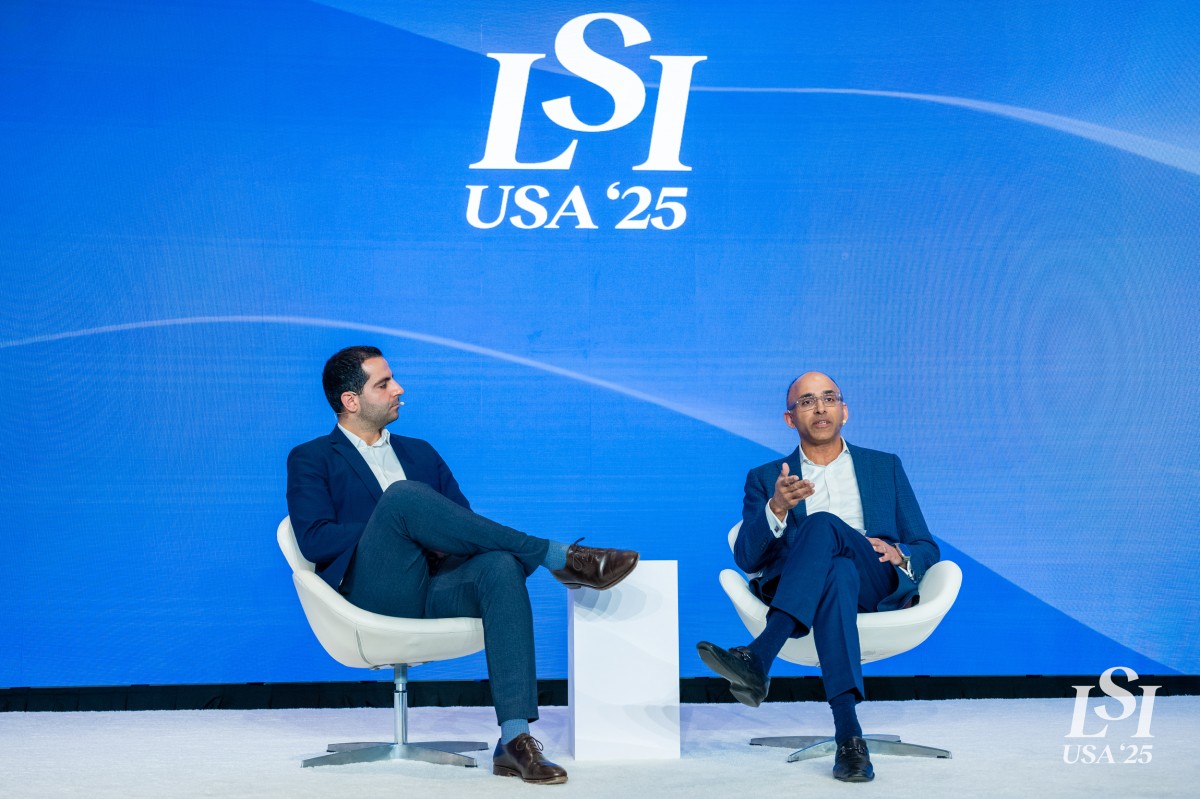
As technologies evolve and healthcare innovation accelerates, the traditional boundaries separating medtech, big tech, and big pharma are increasingly blurry—but the cultural and strategic gaps between them remain. At LSI USA ’25, panelists Juan-Pablo Mas (Action Potential Venture Capital), Nishant Doctor (Surf Therapeutics), and Jordi Parramon (Nexus NeuroTech Ventures) joined moderator Katie Elias to examine how medtech can better align with big tech and big pharma to drive innovation forward.
The conversation centered on key differences in development strategy, investor expectations, and business timelines—critical challenges that arise when building partnerships or raising capital across sectors. As medtech companies seek broader platforms and more ambitious outcomes, understanding and navigating these differences becomes essential for effective cross-sector collaboration and long-term success.
Understanding the Evidence Gap
A major area of divergence between medtech and pharma lies in how each generates and values evidence. Parramon, who transitioned from classical medtech into Google’s life sciences division, highlighted the contrast: “In pharma, the average expenditure of a successful Phase III is over a billion dollars. So the whole evidence generation strategy is designed to manage that risk.”
Medical devices, by contrast, are often developed with smaller trials and faster feedback loops. As Elias pointed out, medtech teams are expected to iterate during the clinical process—something that’s “a big mind shift for people coming from a pharma background.” Doctor added, “Most medtech companies don’t know why something works—they just know that it does. But if you understand the mechanism early, like SetPoint Medical did, you can unlock platform expansion and pursue multiple indications.”
Mas echoed the importance of speed and pragmatism in medtech: “Devices historically rely on empirical evidence. Getting to humans as quickly as possible is the rule of thumb.” But while this approach works for medtech timelines and budgets, it often clashes with pharma’s demand for deep mechanistic understanding—particularly when forming co-development partnerships.
Cross-Sector Boards, Diverse Philosophies
The challenge of bridging philosophies becomes even more apparent in the boardroom. “We had a biotech investor, a medtech investor, and a tech investor on the same board,” Doctor recalled. “No one understood each other. But the diversity also brought creativity—it forced us to look at problems differently.”
Mas noted that differences in board dynamics often stem from sector-specific expectations. “Medtech investors are used to thinking long-term, even in early stages. We ask about procedural complexity, Salesforce efficiency, and physician adoption. Tech investors, on the other hand, are thinking about revenue ramp and user scale the minute you get approval. And pharma investors are laser-focused on mechanism and data.”
Elias summarized the divide: “In pharma, if you haven’t exited by the time you’re doing pricing studies, something’s gone wrong. In medtech, that’s just the beginning.” Parramon added, “Pharma investors are optimizing for mass scalability and early exits based on data. Medtech is optimizing for commercial traction, which often takes much longer.”
Communicating Across Cultures: A Big Tech and Big Pharma Challenge
To successfully navigate these differences, panelists emphasized the need for clear communication—especially early in the partnership. “Founders often assume everyone’s aligned just because they invested,” said Mas. “But if expectations haven’t been discussed, you end up with drama in the boardroom.”
When it comes to big tech and big pharma partnerships, misalignment is even more likely. “I’ve seen firsthand how tech and pharma bring very different assumptions to the table,” said Parramon. “Pharma thinks software guys can fix everything. Tech guys don’t think about evidence at all. If you haven’t aligned on the how—not just the goal—it will fall apart.”
Doctor emphasized that data is now a vital currency in medtech, especially with AI on the rise. “Many investors won’t look at you without a data strategy. However, healthcare is fragmented. Getting external data is a nightmare, so the data you collect from your own product becomes incredibly valuable.” He advised companies to treat data as a core asset, whether it’s related to symptoms, adherence, or outcomes.
Lessons for Leaders
While the panel shared plenty of challenges, they also offered strategies for success. One key lesson: don’t outsource your core strategy. “Never become a contract research organization,” said Doctor. “Partnerships should complement your roadmap, not replace it.”
Mas encouraged medtech entrepreneurs to deepen their scientific knowledge—not to impress pharma, but to sharpen their own strategies. “Pharma can be dismissive of medtech, especially in neuromodulation. They think we’re just cutting nerves. But if we better understand the circuits and mechanisms ourselves, it helps us with payors, regulators, and scaling.”
Parramon noted that internal alignment is as critical as external education. “If you’ve spent your whole career in pharma, you won’t naturally know how to evaluate medtech. So it takes energy to build that bridge internally—and if the emotional connection isn’t there, the default is to retreat back to what you know.”
Why Bridging the Gap Matters
The opportunity to collaborate across big tech and big pharma is huge—but so is the risk of misalignment. As this panel made clear, bridging the philosophical divide isn’t about changing who you are as a medtech leader. It’s about understanding your partners, communicating openly, and holding onto your core strategy while remaining open to new perspectives.
“In the end,” said Mas, “communication and education are what make these partnerships work—or not work.” And for medtech startups looking to scale through cross-border licensing, commercial alliances, or institutional partnerships, those lessons are more relevant than ever.
-Joe-Mullings,-Andrew-ElBardissi,-Ramin-Mousavi,-Addie-Harris,-and-Josh-Makower.png)






